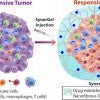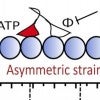
Rice team forges path toward geothermal future
Rice scientists have joined a federal project to accelerate breakthroughs in geothermal systems for unlimited, inexpensive energy.

Rice team forges path toward geothermal future
Rice scientists have joined a federal project to accelerate breakthroughs in geothermal systems for unlimited, inexpensive energy.

Cerium sidelines silver to make drug precursor
Rice scientists have developed a simplified method to make fluoroketones, a drug precursor that typically requires an expensive silver catalyst.

Bioinformatics tool accurately tracks synthetic DNA
A Rice computer science lab challenges -- and beats -- deep learning in a test to see if a new bioinformatics approach effectively tracks the lab of origin of a synthetic genetic sequence.

Chip simplifies COVID-19 testing, delivers results on a phone
Programmed magnetic nanobeads paired with an off-the-shelf cellphone and plug-in diagnostic tool can diagnose COVID-19 in 55 minutes or less.

Rice's Yingyan Lin receives NSF CAREER Award
Rice engineer Yingyan Lin has won a National Science CAREER Award to help close the gap between fast “deep learning” algorithm advances and slow accelerator development.

DARPA backs Rice sensor to detect COVID-19 virus in air
Researchers receive funding for up to $1 million to develop a real-time electronic sensor able to detect minute amounts of the airborne virus that causes COVID-19 infection.

Be there with Martian geologist Kirsten Siebach as the Perseverance rover lands on Mars.

UTHealth, Rice advance oral cancer immunotherapy
Researchers at Rice and the University of Texas Health Science Center at Houston develop a hydrogel that could destroy oral cancer tumors.

Haotian Wang named Sloan Research Fellow
Rice University chemical and biomolecular engineer Haotian Wang has been selected as a 2021 Alfred P. Sloan Research Fellow.

Junghae Suh named AIMBE fellow
Rice bioengineer Junghae Suh has been named a fellow of the American Institute for Medical and Biological Engineering.

New CRISPR tech targets human genome’s complex code
Rice bioengineers harness the CRISPR/Cas9 system to program histones, the support proteins that wrap up and control human DNA, to manipulate gene activation and phosphorylation. The new technology enables innovative ways to find and manipulate genes and pathways responsible for diseases.

Failed storage tanks pose atmospheric risks during disasters
Rice engineers model hypothetical threats from toxins released when aboveground storage tanks fail during a storm.

Study shows why anesthetic stops cell’s walkers in their tracks
Researchers detail the mechanism that allows propofol, a common anesthetic, to halt the movement of kinesin proteins that deliver cargoes to the far reaches of cells.

Feb. 19 panel on history of AAAS in Southeastern Texas to kick off collaboration between Rice, UH, TSU and PVAMU.

A little soap simplifies making 2D nanoflakes
The right combination of surfactant, water and processing can maximize the quality of 2D hexagonal boron nitride for such products as antibacterial films.